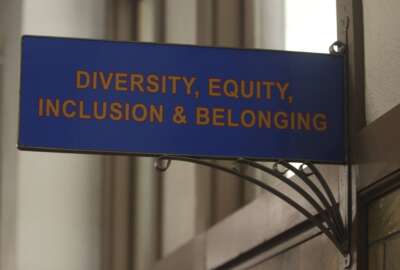SSA prepares to open doors of new $200 million data center
Bill Zielinski, the Social Security Administration's chief information officer, said storage in the cloud and the greater use of virtualization are among the...
wfedstaff | April 17, 2015 7:05 pm
The Social Security Administration’s new data center is almost finished after nearly two years.
The effort to upgrade the agency’s network infrastructure is the focal point of many of the technology improvements SSA is working on in the short term.
“We are merely a month and a half away from where we take possession of the new building. The building, itself, has come in under schedule and under budget, and at high quality. So we will begin the migration once we have the keys to start moving services over to the new data center,” said Bill Zielinski, the Social Security Administration’s chief information officer. “We are really looking forward to that time when we can take advantage of all the things the new technology will provide us.”
Zielinski said SSA isn’t waiting for the launch of the new data center to look at storage in the cloud or greater use of virtualization. In fact, he said, many of those new technologies were prerequisites before moving into the new data center.
“We didn’t want to simply move the old platform into a new, enabling building. We really have a mindful plan that says our future state includes these sorts of things, which includes cloud-based storage solutions, which includes a much greater level of virtualization. We’ve already begun the transition, so when we move to the data center, it’s in this new future state and not in this past state,” Zielinski said. “There are other advantages the new center will allow us to do, and it really comes into moving into more 24/7 types of services that, with the structure we will have in the data center, we will be able to explore.”
SSA awarded Hensel Phelps Construction a $192 million contract in January 2012 to build a new data center in Urbana, Maryland. It will replace the current data center in Woodlawn, Maryland, which was close to capacity in 2012, according to a SSA inspector general report.
SSA also struggled to ensure it backed up its data properly and adequately, relying on older technology that could take days to retrieve key information if needed.
The agency has been improving its network backbone, awarding a $233 million contract in 2012 to CenturyLink to upgrade how it manages data. It also hired Verizon in 2009 under a separate $140 million deal for a wide-area network and to transition the external portion of it to a modern IP platform.
While the data center is almost complete, Zielinski, who came back to SSA in 2011 after a brief stint with the Office of Personnel Management, is focusing on a number of other priorities as well.
He said cybersecurity and meeting the needs of the citizens by moving more services online are his top two.
A major piece to the citizen services effort is the My Social Security website, where the agency is moving more and more applications over the coming year.
“There will be a lot of focus to make sure we are providing good, strong and safe services that people can use, and it provides them a lot of choice,” Zielinski said. “Rather than having to go into our field offices, people can go online and in a very timely, safe way get the work done that they need to.”
He added part of the impetus for moving more services online is the potential for cost savings. If SSA can take more and better advantage of online services, then it can move funding to other mission areas.
“We are putting up some of these mobile application services to be able to enable people to take care of those things that are those types of transactions that lend themselves to mobile,” he said. “With that said, we also are looking from a design perspective as we move into the future and as we look at constituting those online services, rather than having to do development specifically toward mobile or specifically toward online, whether it’s a laptop or a desktop. [We are] taking a look to say rather than having to design to a specific target, we are doing things that can move and shift to any of those. It’s a flexible design that allows it to be consumed on just about any device because they will change.”
Of course, all of this is dependent on SSA securing the networks and data in its systems.
Zielinski said SSA is a constant target of hackers and bad actors because of the money it pays out and the personal information it holds. He said cybersecurity is a constant challenge and priority for his office.
RELATED STORIES:
SSA data backup still 6 months away
SSA to upgrade data network under $233M deal
SSA hires Verizon to provide data services under Networx
More changes at SSA: CIO resigns; OPM’s Zielinski returns
Copyright © 2025 Federal News Network. All rights reserved. This website is not intended for users located within the European Economic Area.
Jason Miller is executive editor of Federal News Network and directs news coverage on the people, policy and programs of the federal government.
Follow @jmillerWFED






